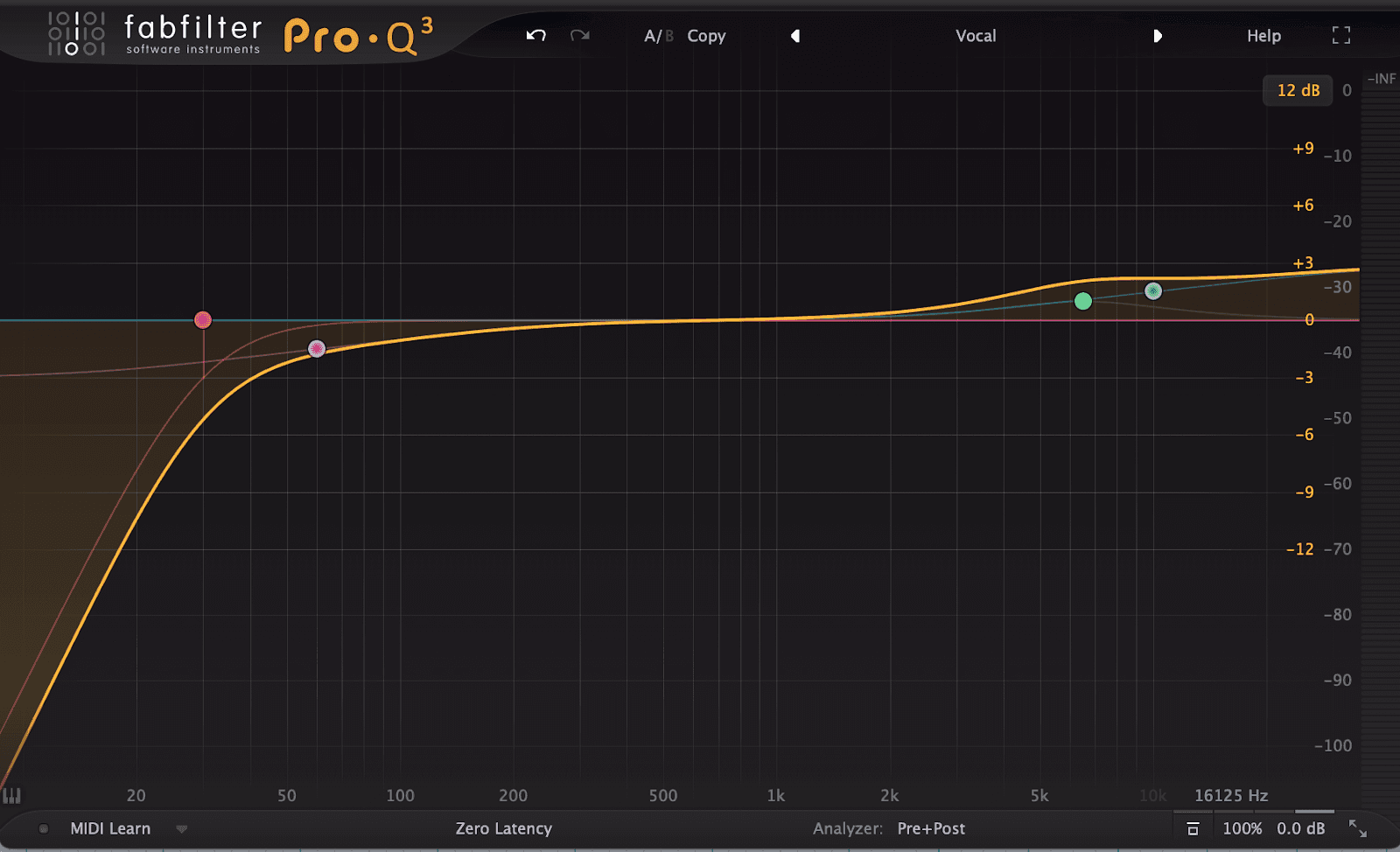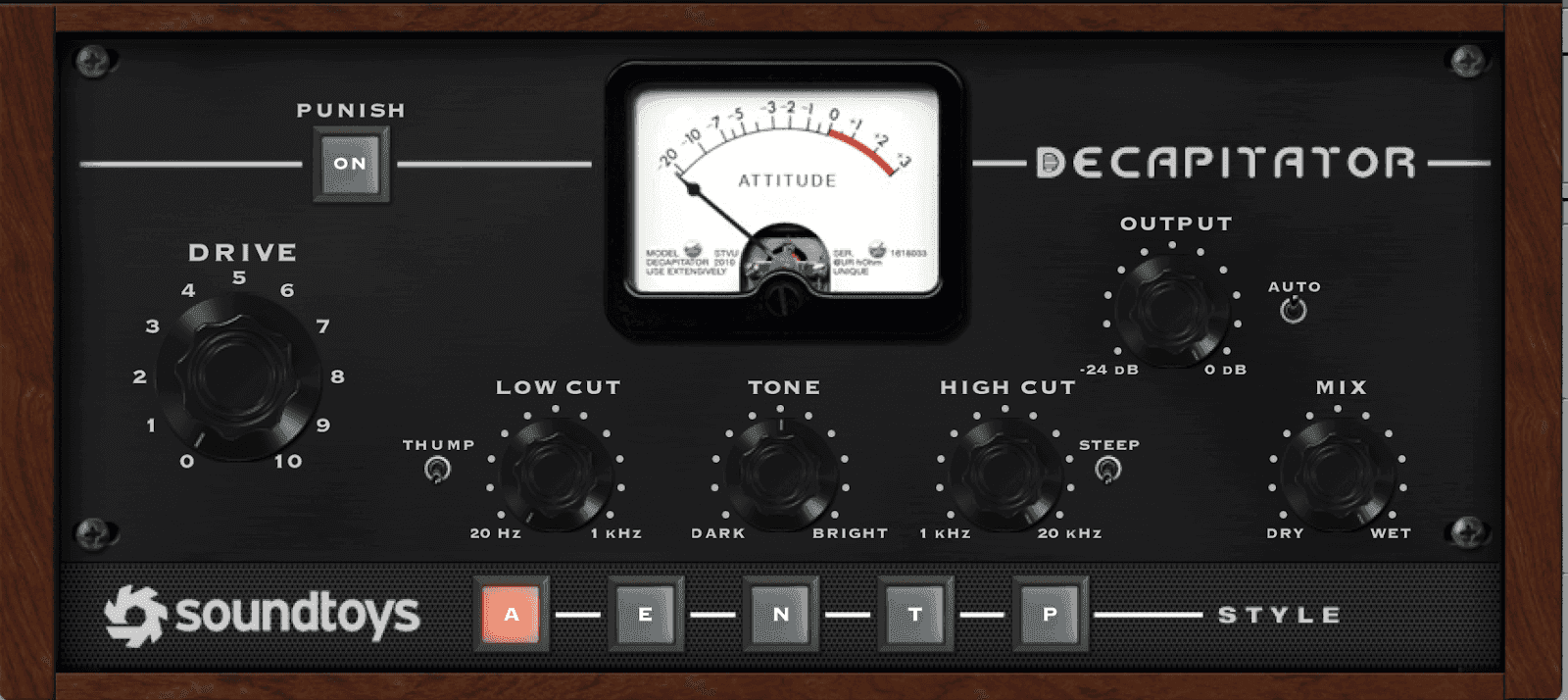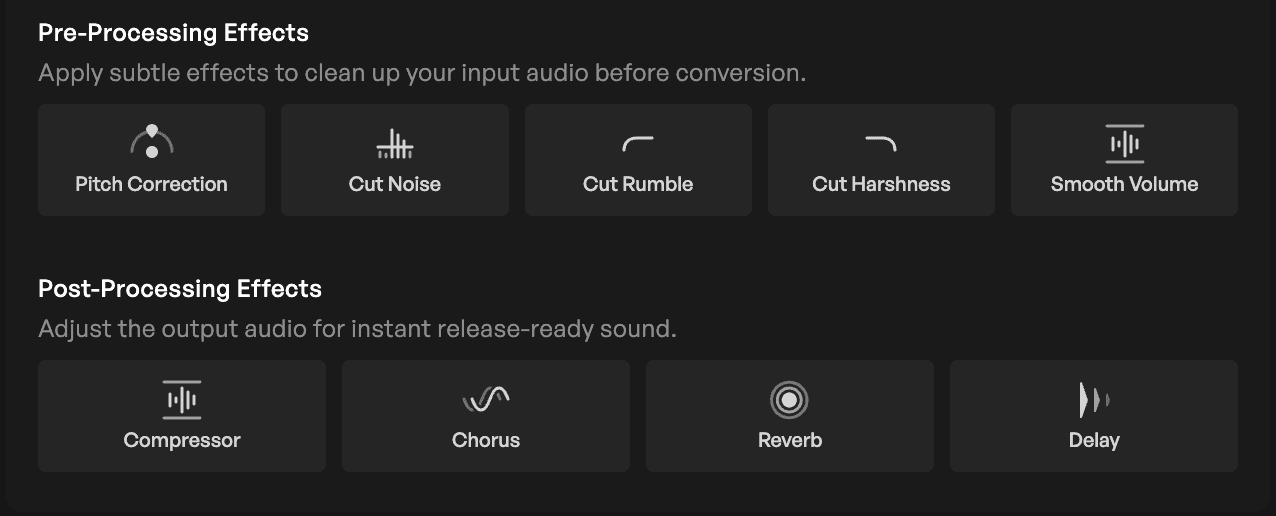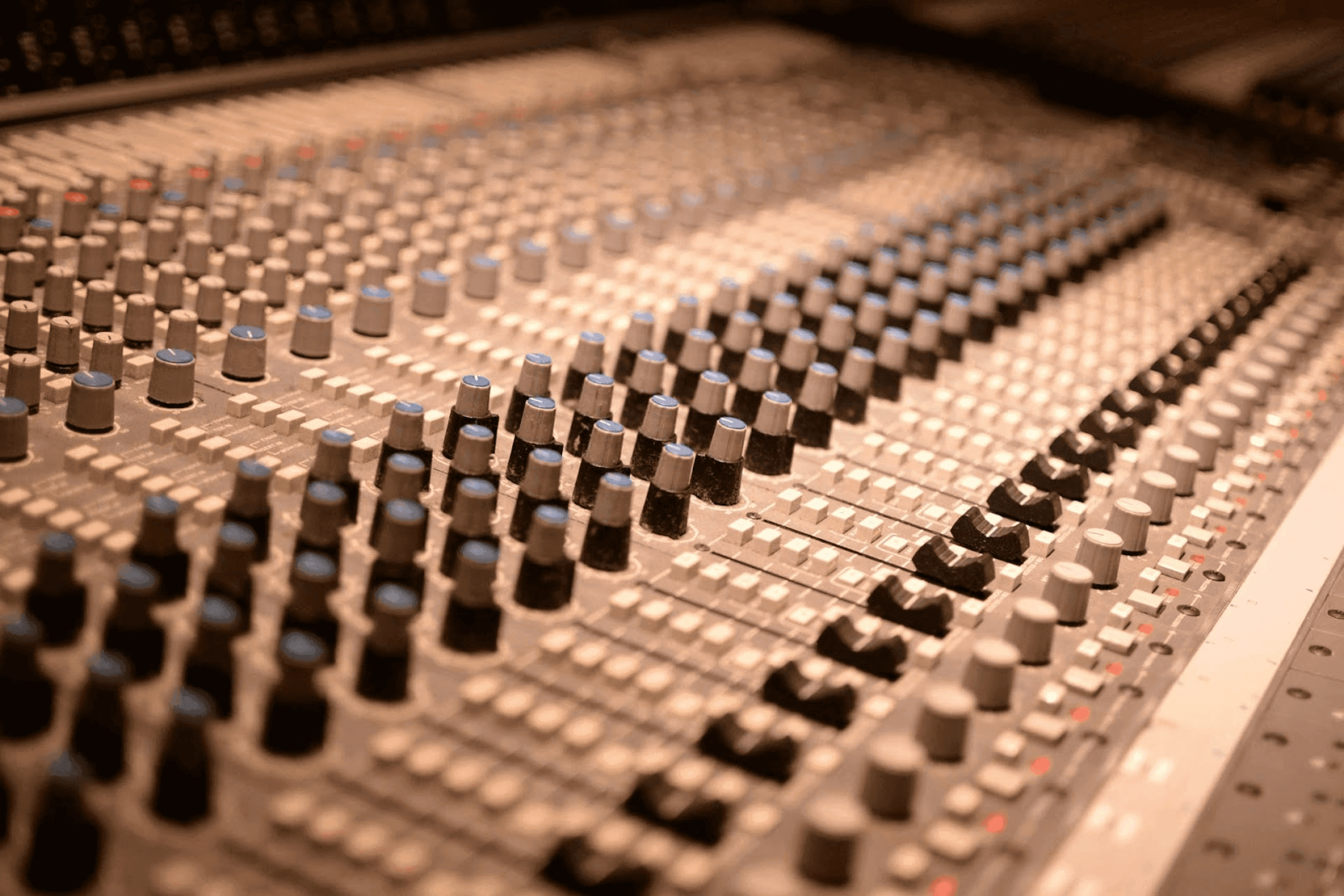Mezcla de vocales: Consejos esenciales y trucos para pistas con un sonido profesional
Escrito por
Publicado el
2 de agosto de 2024
Los tiempos han cambiado desde mi primera experiencia grabando en un grabador de casete Tascam de 4 pistas. Cuando descubrí por primera vez mi pasión por la música, nunca pensé en ser un ingeniero de mezcla; simplemente asumí que tocaría la guitarra en una banda, escribiría canciones, haría presentaciones y, con suerte, algún día acabaría en un estudio de grabación. Afortunadamente, pude hacer todas esas cosas. Pero vivimos en un mundo diferente ahora: un mundo donde todos tienen el equivalente a un estudio de varios millones de dólares en sus computadoras portátiles e incluso algunas aplicaciones bastante impresionantes en sus teléfonos. Los músicos nunca han tenido más control creativo del que tienen hoy. Con ese control vienen habilidades y capacidades que van más allá de aprender un instrumento.

Las voces suelen ser el centro de una pista. La voz humana varía mucho en rango, tono y timbre, y todas estas variables deben ser consideradas para mostrar tus pistas vocales de la mejor manera posible. Lograr un sonido vocal perfecto y hacer que las voces suenen profesionales son cruciales en este proceso. Varias técnicas y herramientas, como autotune, reverberación y complementos como Nectar 4, pueden ayudar a mejorar las voces para cumplir con los estándares de la industria y crear un producto final pulido. Este artículo explorará diferentes técnicas para ayudar a que tus pistas vocales se sitúen justo donde las necesitas.
Estableciendo La Fundación: Herramientas Esenciales para la Mezcla Vocal
Después de que hayas escrito una gran canción, grabado todos los instrumentos y registrado una actuación vocal inspiradora, es hora de ponerte tu sombrero de ingeniero de mezcla (no se recomiendan gorras que cubran tus oídos). Cuando se trata de mezclar voces, hay un conjunto estándar de herramientas que se utilizan para abordar problemas tradicionales que surgen comúnmente con los vocalistas. Una cadena vocal típica suele consistir en EQ y compresión, pero otras herramientas como de-esser, reverberación y efectos vocales creativos pueden ser utilizados para ayudar a afinar la voz para que se mezcle perfectamente con la vibra y dirección general de tu pista. La cadena de mezcla vocal es esencial, ya que incluye varios elementos de procesamiento como plugins de reverberación y delay, que contribuyen a lograr sonidos vocales pulidos y profesionales. El orden de la cadena vocal puede variar: algunas personas prefieren EQ antes de compresión, mientras que otras optan por compresión antes de EQ. Experimentar con ambos métodos puede ayudarte a determinar qué funciona mejor para tu pista específica.
La compresión es una herramienta crucial en la mezcla vocal, ayudando a controlar el rango dinámico de la actuación. La reducción de ganancia desempeña un papel significativo en nivelar las pistas vocales mientras mantiene la integridad dinámica, asegurando un sonido pulido sin sacrificar claridad ni introducir artefactos. Al ajustar cuidadosamente la configuración del compresor, puedes lograr un nivel vocal consistente que se asiente bien dentro de la mezcla.
Esculpiendo el Sonido Perfecto con Ecualización
Encontrar la curva de EQ perfecta para tu pista vocal implica lidiar con muchas variables. El timbre puede cambiar según el género y el enfoque vocal de una persona, y el tipo de micrófono utilizado también es un factor significativo. Los micrófonos más baratos a menudo acentúan los agudos, lo que puede impartir un carácter estridente y áspero incluso a los cantantes más talentosos. Sin embargo, vivimos en una era dorada de fabricación de equipos de grabación, y empresas como Warm Audio producen micrófonos asequibles que aportan un tono complementario a un precio razonable. También cabe destacar que muchos de los mejores cantantes del mundo todavía prefieren cantar con micrófonos de trabajo asequibles como el Shure SM57, incluso cuando se les da la opción de usar micrófonos vintage alemanes.
La base fundamental del uso de EQ es eliminar cualquier frecuencia no deseada y realzar las deseables. La EQ vocal es crucial para refinar y mejorar las pistas vocales al cortar frecuencias no deseadas y realzar otras para una mejor claridad y presencia. Uno de los mejores plugins vocales para EQ es el FabFilter Pro-Q3, que ofrece un gran visualizador para ayudar a encontrar picos ofensivos y ruidos molestos.

Creando Tu Estrategia de EQ Vocal
Aplicando un Filtro Pasa Altos: El ruido de fondo de baja frecuencia es común al grabar. Puede ser causado por un coche que pasa o la vibración del soporte del micrófono debido a pasos o golpes. Típicamente, cualquier cosa por debajo de 80-100 Hz será información innecesaria que solo ensucia una pista. Experimenta aplicando un filtro pasa altos en este rango, eliminando cualquier audio que no reste al tono de bajos básicos del cantante.
Eliminando Barro: Otro culpable de la posible acumulación de barro puede estar en el rango de 150-350 Hz. Experimenta reduciendo, pero ten cuidado de no exagerar, ya que esto también puede ser una fuente de cuerpo y potencia.
Mejorando la Claridad: Entender el mensaje lírico es crucial para una mezcla vocal exitosa. Aumentar de 2.5 a 5 kHz puede mejorar la inteligibilidad de las palabras, pero usa precaución ya que esta área también puede ser propensa a aumentar la aspereza.
Agregando Brillo a los Agudos: Después de abordar todos los puntos de frecuencias básicas, el movimiento final suele ser aplicar una sensación de "aire" al extremo ultra-alto del espectro, generalmente entre 8-15 kHz. Un leve aumento en este rango puede proporcionar un acabado agradable y pulido al tono vocal.
Antes de sumergirte en estas estrategias específicas de EQ, es importante considerar la compilación vocal. La compilación vocal es esencial para seleccionar y fusionar los mejores segmentos de varias tomas vocales en una sola pista pulida, asegurando que todos los elementos vocales estén sincronizados de manera efectiva.
Domando Dinámicas: El Arte de la Compresión
La compresión controla el rango dinámico de una vocal y ayuda a que una pista sobresalga en una mezcla. Esencialmente, la compresión hace que las partes más suaves suenen más fuertes y las partes más fuertes más suaves, nivelando una actuación para que pueda ocupar un nivel más consistente. Comprimir la voz principal es crucial para lograr un sonido equilibrado dentro de una mezcla. Los compresores tradicionales utilizados en voces pueden variar en opciones de control, pero dos de los compresores vocales más utilizados son el Teletronix LA-2A y el Urei 1176. El Teletronix LA-2A, inventado a principios de los años 60, tiene varias iteraciones de plugins. Su diseño simple incluye solo dos perillas: Reducción de Picos y Control de Ganancia. Usar un compresor como el LA-2A puede ser un gran punto de partida para aquellos nuevos en la compresión. El Urei 1176 Peak Limiter, un descendiente del LA-2A, amplía las posibilidades de control, ofreciendo opciones de relación, tiempo de ataque y liberación, así como perillas de nivel de entrada y salida.


Dado que muchos compresores modernos ahora incluyen opciones de control similares al 1176, usaré esas configuraciones como mi base.
Relación: Comienza con una relación de 4:1 donde solo se comprimen los picos.
Tiempo de Ataque y Liberación: Un tiempo de ataque más lento conservará los transitorios naturales de la actuación. La liberación debe ajustarse para asegurar una recuperación suave entre frases vocales.
Ganancia de Compensación: Aplicar compresión puede causar una caída en el volumen de la señal original. Por lo tanto, usa la Ganancia de Compensación o la perilla de Salida para elevar la pista al nivel apropiado.
Herramientas de Procesamiento Adicional y Efectos Vocales: Reverberación y Delay
Después de encontrar un buen equilibrio entre compresión y EQ, pueden ser necesarias herramientas adicionales para completar un sonido vocal ideal.
De-Esser: Un de-esser es una herramienta utilizada para controlar la sibilancia, el sonido chillón producido por palabras con “sh” o “s.” Estos sonidos duros pueden cortar a través de una mezcla como uñas en una pizarra y necesitan ser domesticados para evitar distracciones no deseadas al oyente. He tenido mucha suerte con tanto FabFilter Pro-DS como OekSound Soothe. Abordar el ruido no deseado en las grabaciones vocales también es crucial para lograr un sonido limpio y profesional.
Delay: Usar un efecto de delay en tu voz puede crear un sentido aumentado de profundidad y espacio. Experimenta tanto con un slapback (delay rápido) como con un delay de octava más largo para varios niveles de expansión vocal. Soundtoys EchoBoy ofrece una amplia variedad de estilos de delay que vale la pena explorar.
Reverberación: Al igual que el delay, agregar reverberación a una vocal puede crear un sonido más expansivo. Ten cuidado de no exagerar, ya que agregar demasiada reverberación puede hacer que las cosas se vuelvan "soposas" y más difíciles de entender en cuanto a la letra. Valhalla VintageVerb es una gran opción asequible y de alta calidad para experimentar.
Saturación: Utilizar plugins de saturación como SoundToys Decapitator o emuladores de cinta como el UAD Studer A800 puede aumentar el calor y la riqueza. Exagerar la saturación puede impartir dureza, pero encontrar la cantidad correcta puede ser mágico. Varias técnicas de procesamiento de audio son esenciales para mejorar las grabaciones vocales y lograr pistas de sonido profesional.

Mezclando con Modelos Vocales AI: Un Enfoque Simplificado
Utilizar un modelo de voz AI requiere la misma consideración cuidadosa que contratar a un vocalista de sesión. En Kits.ai, nuestras voces están éticamente entrenadas con cantantes increíbles de todo el mundo, asegurando una calidad de primera. Al incorporar un modelo AI en tu pista, ten en cuenta que ya se pueden haber aplicado algunos procesos y tratamientos. Esto significa que cualquier EQ y compresión adicionales deben ser manejados con un toque sutil. Además, refinar y procesar la grabación vocal es crucial para lograr un producto final pulido, incluyendo técnicas como corrección de tono, compilación vocal y de-essing.
Kits.ai también ha simplificado el proceso de producción al ofrecer efectos como EQ, compresión, reverberación y delay directamente durante el proceso de conversión. Así es como funciona:
Selecciona “Convertir.”
Sube tu pista vocal.
Elige el modelo de voz que te gustaría usar.
Abre la pestaña “Configuraciones” para acceder a una amplia gama de herramientas de producción.

Al simplificar estos pasos, Kits.ai te permite centrarte más en la creatividad y menos en los detalles técnicos, haciendo que la integración de modelos vocales AI en tu música sea fluida y eficiente.
Pensamientos Finales: Paciencia y Práctica Hacen la Perfección
Como cualquier habilidad nueva, mejorar tu capacidad de mezcla requiere tiempo y práctica. Es importante recordar que cada canción variará en el enfoque requerido. El proceso de mezcla vocal es un aspecto crucial para lograr grabaciones vocales de alta calidad en la producción musical. A través de la paciencia y la dedicación, tus oídos te guiarán y tus mezclas brillarán.
-SK
Sam Kearney es compositor, productor y diseñador de sonido con sede en Evergreen, CO.

